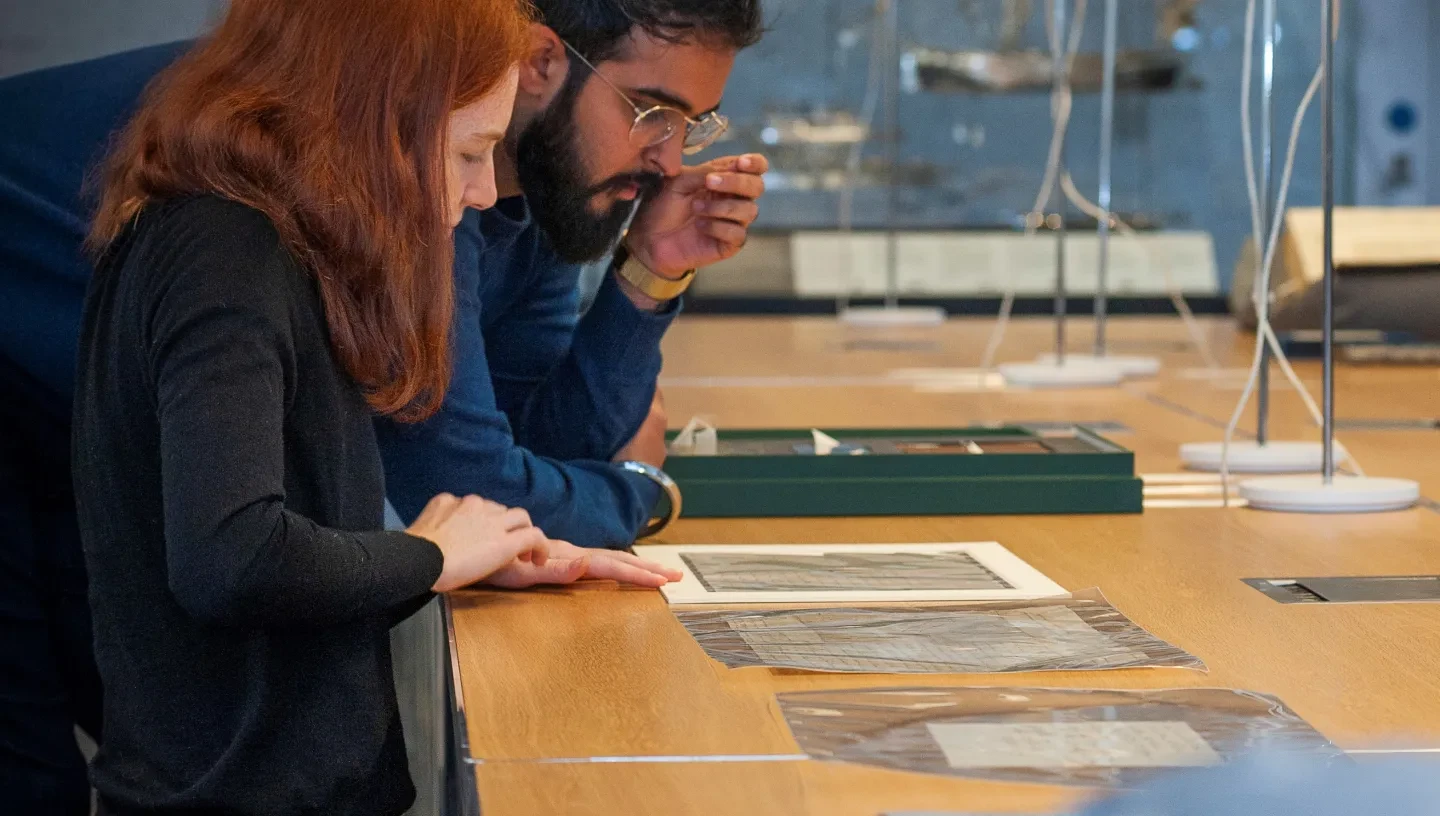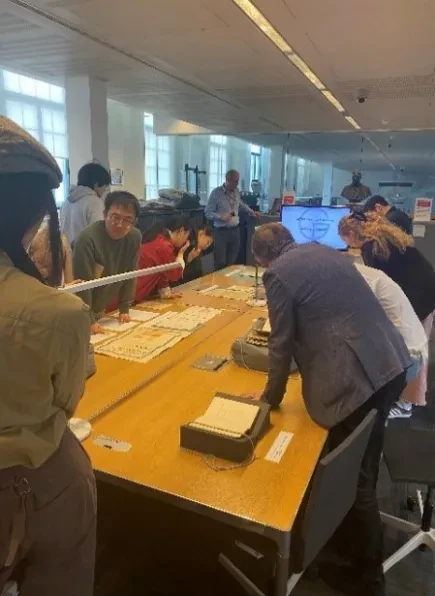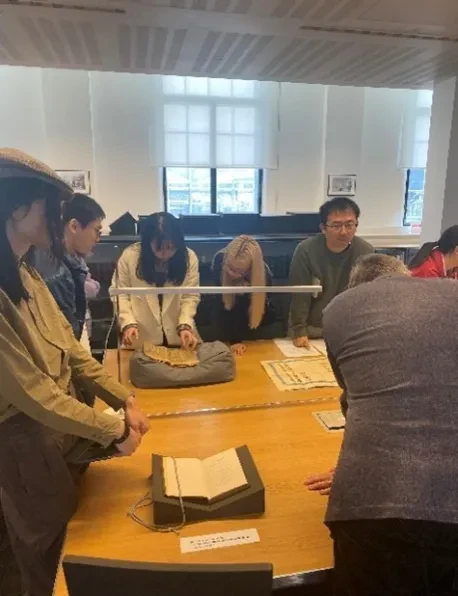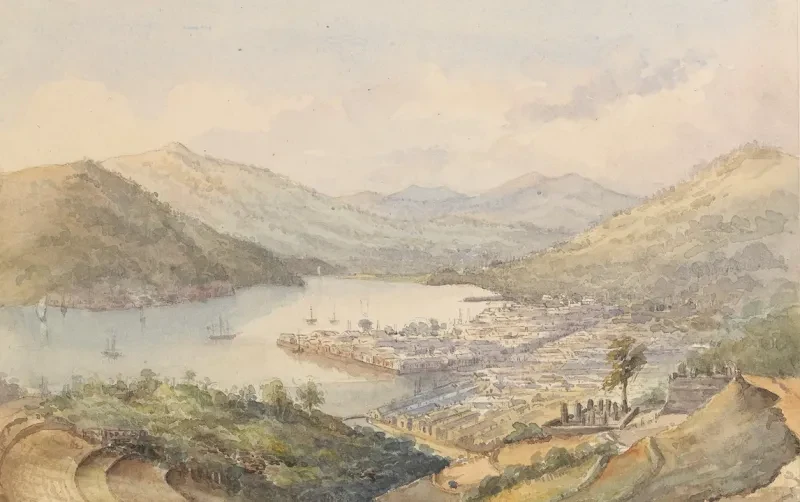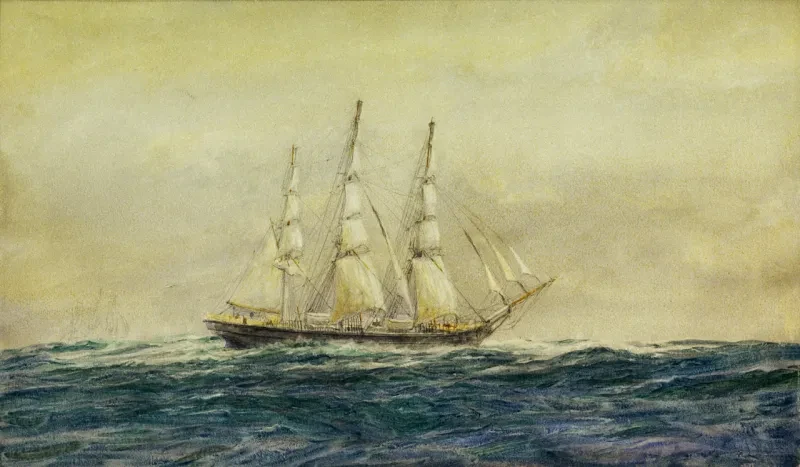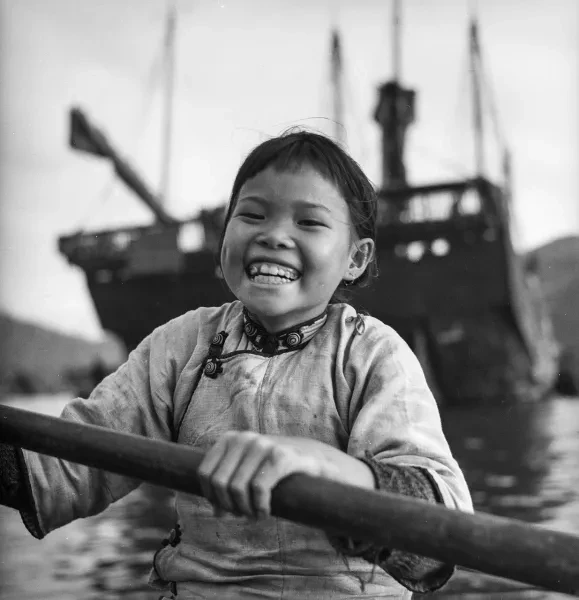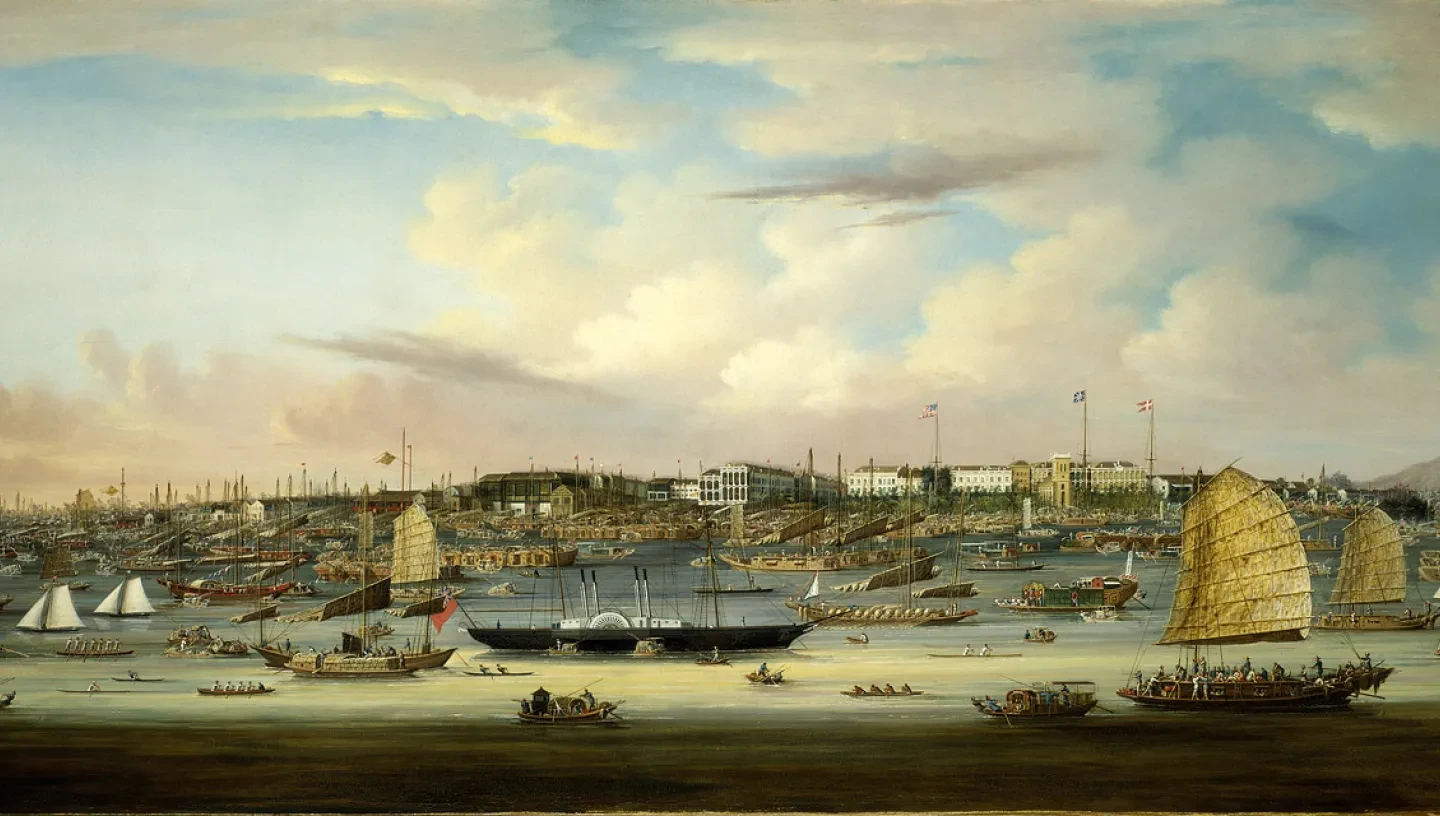
A recent visit to the Caird Library by students from the School of Oriental and African Studies shows that making collections accessible is a two-way street.
Vast research potential
Visiting the Caird Library and Archive is an important part of the course Opium and Empires, convened by Dr Lars Laamann (Senior Lecturer in Chinese Studies) of the Department of History, School of Oriental and African Studies (SOAS), University of London.
For many of the students, this was their first visit to an archive and a crucial behind-the-scenes glimpse into the vast research potential to be found in collections such as those held by the National Maritime Museum – the potential of which they helped to unlock through translating hitherto unknown Chinese manuscripts.
Spontaneous translations
Also amongst the items on display was the following uncatalogued manuscript simply titled ‘Chinese manuscript’, with no further information to hand on its content other than it was seized by the British from a Chinese temple at the time of the Opium Wars.
One of the most important exchanges on the day therefore involved the spontaneous translations kindly offered by some of the students, and which have now been incorporated within our online catalogue records at: Chinese Almanac titled: 'The blessings come from doing good deeds': The Thousand Character Classic 1825 CE and Correspondence by William Young on HM Brig WOLVERINE including Chinese Anti-Opium Tract, encompassing a wider history of the anti-opium movement which is yet to be thoroughly explored. We extend our sincere thanks to the students who offered their time and invaluable insights into these previously ‘hidden’ manuscripts.
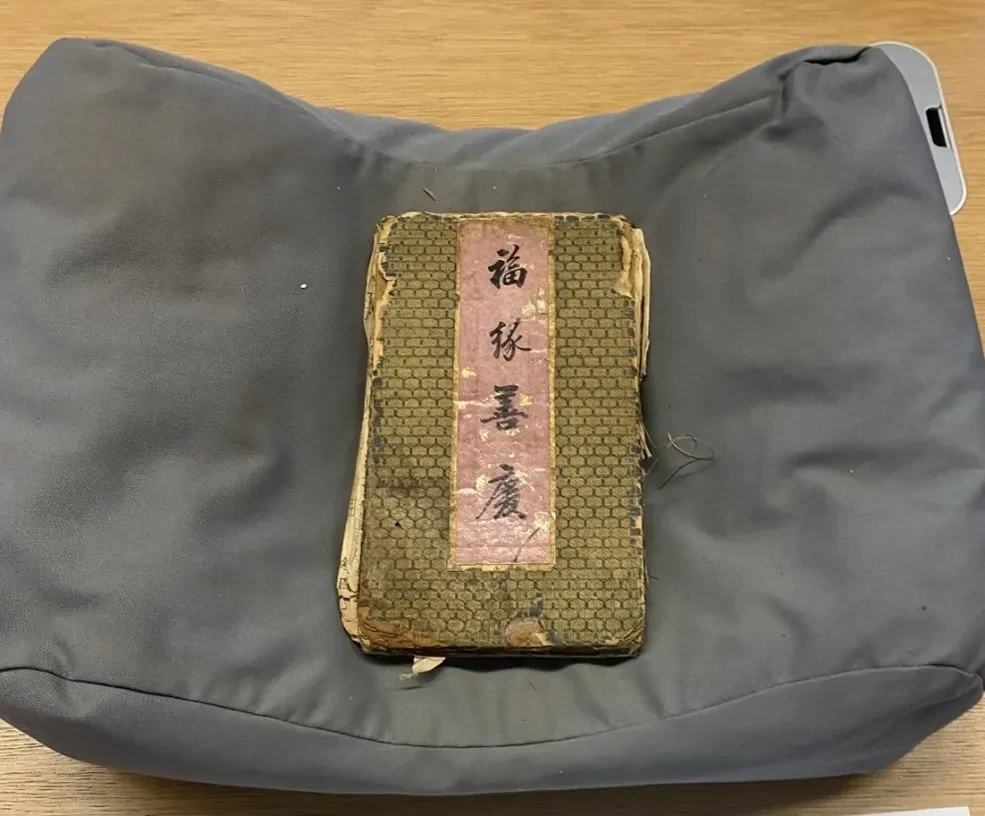
WAT/7
Chinese Almanac titled: “The blessings come from doing good deeds”: The Thousand Character Classic 1825 CE
Bound Chinese manuscript (dated around 1825 CE) from Nanking [Nanjing], collected by Captain George Alexander Waters in 1842 while serving with HMS Vixen.
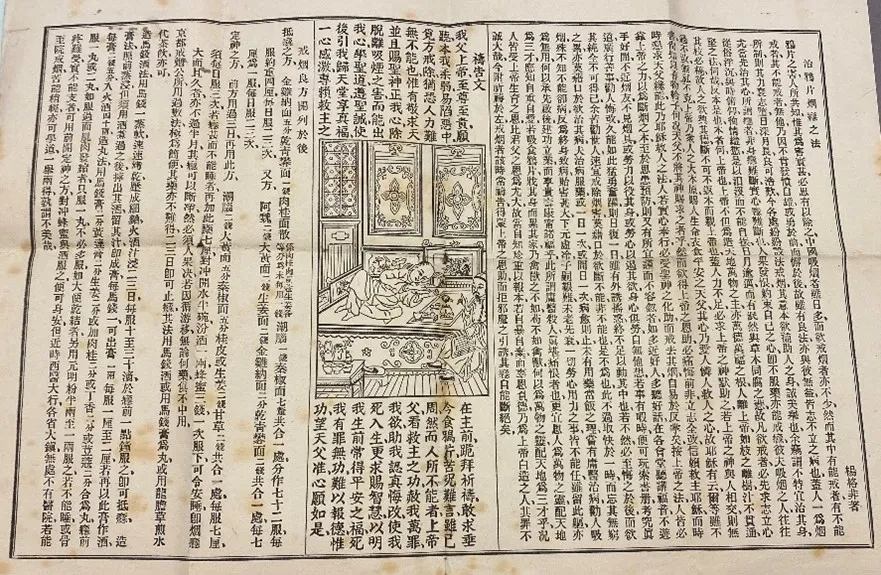
AGC/Y/4
Anti-Opium Tract in Chinese script, 1900
Translated by SOAS students, reading from right to left: written by Yang Gefei, 'How to cure the addiction of opium', outlining the harms of opium; middle column contains a Christian prayer; left column translates as 'Chinese medicine prescription for curing opium addiction'.
What is a 'Chinese manuscript'?
Another fascinating perspective was provided by Dr Lars Laamann regarding the intrinsic nature of the ‘Chinese manuscript’ itself and loss of some of its original features. He highlighted that the binding of the manuscript had been altered upon European appropriation of the item, explaining that many early Chinese books such as these have been modified or rebound in western style i.e., where the pages now display like a western book rather than in their original form, fanned in a (right to left) layout known to Chinese readers[1].
As heritage professionals, we are often called upon to offer an enhanced understanding of the provenance and context of materials within our care so that researchers can gain a more informed sense of the lens through which the original materials were created and used. Where known, some details were shared with the students regarding the types of information captured in various formats, who the intended audiences were, how they were collected, and by whom – including colonial legacy issues and allied collections held elsewhere.
Likewise, in recognition of the limitations and paucity of primary sources relating to the Opium Wars from a Chinese perspective[2], two items were displayed which sparked further conversation in this area: a copy printout of Commissioner Lin Zexu (Lin Tse-Hsu) Writing To Britain's Queen Victoria To Protest The Opium Trade, 1839, and a publication within our collection titled: The Opium War Through Chinese Eyes, by Arthur Waley (1958).
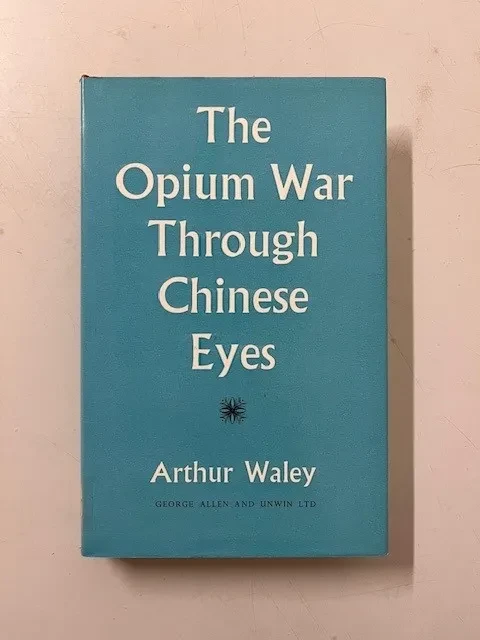
Waley, Arthur. The Opium War through Chinese eyes. London: Allen and Unwin, 1958. PBE1473.
Principally drawn from the diaries of Commissioner Lin Zexu, a Chinese political philosopher and politician, these translations provide a first hand account of the Chinese experience during the First Opium War (1839-42).
Two-way dialogue
We are keen to continue these conversations and nurture an ongoing and two-way dialogue between the Museum and new audiences so that our collections may better reflect our shared, interconnected, and diverse histories moving forward. This recent visit by students from SOAS was an important step in this direction.
Finally, Dr Lars Laamann commended the value of the collections and student visits to the Caird Library, remarking that
Staff at the Caird Library made us feel welcome and gave us a detailed introduction to the nature of the collection, to the different types of materials and how to access these, as well as to the audience it attracts, both specialist academics and members of the curious public. Of particular interest to our group were items relating to late imperial China (until 1911), as well as to that of the Republican era (1911–1949). A few items in Chinese we managed to decipher and interpret on the spot, whilst others require further study. A desideratum for historians would be a detailed historical introduction to the Caird Library as well as an idea of where the [non-UK governmental] items originate from, i.e. how they were purchased or donated. A fantastic playground for China historians!
Dr Lars Laamann
References
[1] Shoenberger, Elisa. What does it mean to decolonize a museum? MuseumNext, 2 January 2023, website visited 8 January 2024: museumnext.com/article/what-does-it-mean-to-decolonize-a-museum/
[2] Richard, Françoise. From China to Cambridge: modification of rare Chinese printed books within Cambridge College libraries, Cambridge Colleges’ Conservation Consortium (Corpus Christi College) Cambridge UK, 19 August 2017, library.ifla.org/id/eprint/1692/
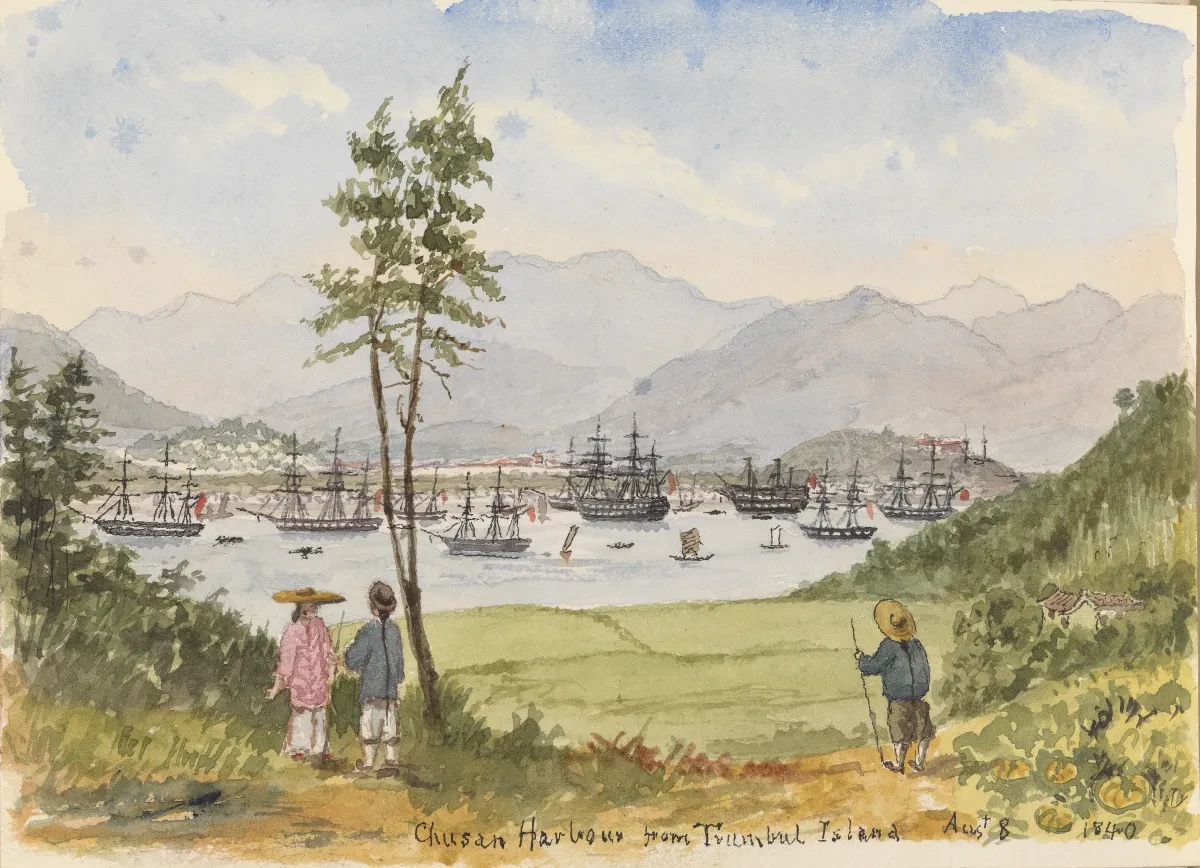
CRJ/4
Private illustrated Journal of Dr E H Cree, Volume IV, 1840
Dr Edward H Cree (1814-1901), Deputy Inspector-General of Hospitals and Fleets. Service on board RATTLESNAKE, travels to Cape of Good Hope, Colombo, Trincomalee, Singapore, China Sea and Chusan.
